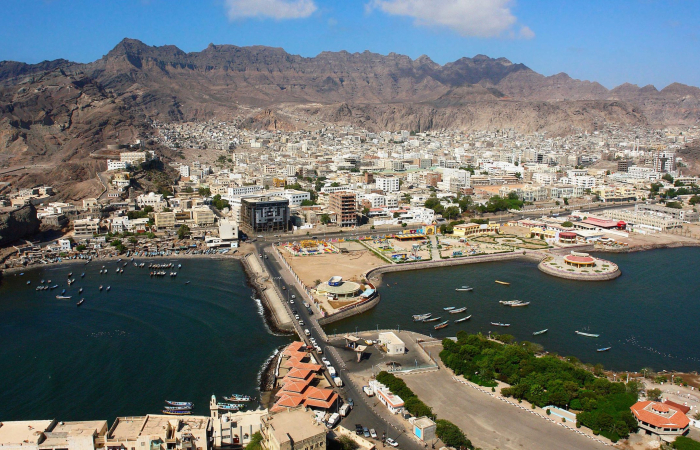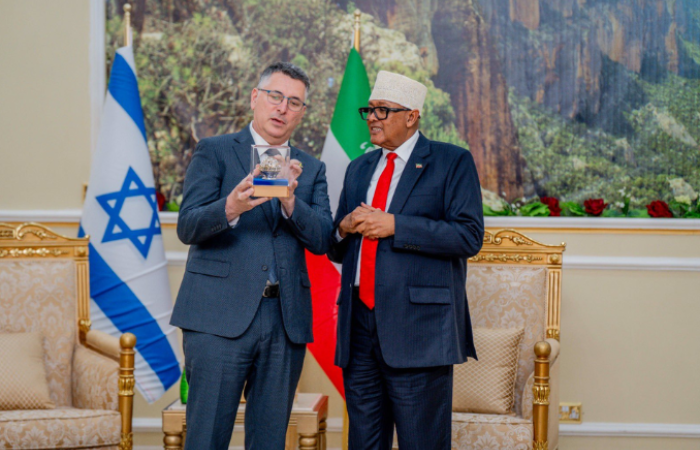On the eve of the expected meeting between the leaders of Armenia and Azerbaijan in Granada on Thursday (5 October), on the margins of the gathering of the European Political Community, Brussels' leading think tank, the European Policy Centre, has published a commentary by commonspace.eu Managing Editor and Director of LINKS Europe, Dr Dennis Sammut on the prospects of the EU's initiative to bring lasting peace between Armenia and Azerbaijan.
He argues that "the exodus of 100,000 Armenians from Karabakh following the recent Azerbaijani military operation has focused minds. However, as it pursues its peace initiative with Armenia and Azerbaijan, the EU’s primary objective is to get both sides to sign a peace agreement. Going forward, the EU needs to adopt a regional approach as the core of its engagement with the South Caucasus."
This week in Granada, the next episode in the EU’s quest to bring Armenia and Azerbaijan to peace and reconciliation will play out on the margins of the meeting of the European Political Community. European Council President Charles Michel, French and German leaders Emmanuel Macron and Olaf Scholz are expected to host President Ilham Aliyev of Azerbaijan and Prime Minister Nikol Pashinyan of Armenia for another summit. This meeting will likely be decisive in identifying if the EU’s efforts to foster peace between the two countries can succeed.
It comes at a dramatic moment when, after a short but sharp Azerbaijani military operation, the Armenian political project in Karabakh – the self-declared Nagorno-Karabakh Republic – collapsed. The consequence has been the uprooting of the Armenian population of Karabakh, who, fearing Azerbaijani retribution, moved to Armenia in the last few days. The Azerbaijani population of Karabakh left in similar circumstances in 1993 when the Armenians took control of Karabakh. As of today, the territory remains empty.
Blessed are the peacemakers
When Charles Michel launched his effort to reconcile the two countries in 2021, few thought he had any chance of success. Until then, the EU had mostly remained a spectator to the Armenia-Azerbaijan conflict. The fact that the leaders of Armenia and Azerbaijan accepted the EU’s hand of peace, and its mediation role, is due to three factors: first, Michel managed to secure the trust of the leaders of the two countries during his visit to the region in summer 2021; second, the timing was right – Aliyev and Pashinyan were keen to minimise the Russian role in the peace process, and this need accelerated after the Russian invasion of Ukraine in February 2022; third, the EU’s team in Brussels that supported Michel in the process was particularly talented and effective, with the result that some early progress could be registered in the negotiations.
Despite these positive factors, Armenia and Azerbaijan, whilst edging towards peace, still distrusted each other; different interpretations of the declaration signed by Russia with the two countries on 10 November 2020, which ended the 44-day Karabakh War, meant that both sides soon became frustrated with it. The Azerbaijani leadership, having registered a clear military victory in the war, felt that it was not getting what it settled for; Armenia sought to re-interpret the declaration to get back what it had lost. With both sides in a revisionist mode, further conflict was inevitable. Incidents, skirmishes, incursions, and low-intensity violence occurred regularly and in parallel to the peace negotiations for the last two years.
War returns…briefly
The 19 September Azerbaijani military operation, and subsequent Armenian exodus from Karabakh triggered an international response, which neither side found adequate for different reasons. However, a consensus appears to be emerging, especially amongst Western countries, that if Azerbaijan repeats the pattern of using military force to secure its objectives (i.e. opening up a transport corridor connecting its mainland with its exclave of Nakhichevan through Armenian territory), that a red line would require a tough response. The matter is related to the wider issue of Armenian stability, vulnerability, and the durability of the Armenia’s democratically elected government of Pashinyan, which has recently been subject to all kinds of hybrid pressures from Russia. Within the EU, a broad consensus is emerging to support Armenia on both issues. The EU needs to do so whilst remaining an honest broker when it comes to Armenia-Azerbaijan relations.
The EU efforts have also had to reckon with the fact that Russia, who considered itself the kingpin of any negotiated peace, is openly resistant of any progress in reconciling the two countries of which it is not the main promoter. The noises coming out of Moscow on the EU peace process have not been positive at all despite some attempts by the EU to reach out to the Kremlin to avoid misperception.
Granada may be the EU’s last chance
Given the speed of changes on the ground, there is a risk that the EU peace initiative may run out of steam or become irrelevant since, at this point, Armenia-Azerbaijan relations can take different trajectories. Granada offers the last opportunity for a substantial peace agreement that would, at last, turn the page on an ugly chapter of modern South Caucasus history. It is unlikely that a substantial deal can be signed yet. Still, in Granada, it should become quite clear whether the conditions exist to overcome the final obstacles, with the sides formally recognising each other’s territorial integrity based on the borders stated in the 1991 Almati Declaration, and, eventually, by establishing full diplomatic relations.
The EU needs to be strategic in its vision and focused on its approach. Getting an Armenia-Azerbaijan peace deal agreed and signed by the end of the year must now be the priority. Observers of the process, even cynical ones, now agree that this goal is within reach.
Next steps?
Whilst signing a peace agreement must remain the priority, work needs to start immediately on what happens afterwards. The EU has long-term political, economic, security and defence interests in the South Caucasus. Its approach to Armenia-Azerbaijan relations needs to be long-term, too.
The EU also needs to:
- Deepen the relations with the two countries bilaterally, recognising their different visions and foreign policy trajectories.
- Develop a comprehensive regional policy which will consolidate the peace process. Up to now, a regional approach in the South Caucasus has been impossible due mainly to the Armenia-Azerbaijan conflict. A peace agreement will open the way for regional cooperation to become the norm. As a first step, the EU needs to update its Eastern Partnership (EaP) policy and include a South Caucasus Regional approach, and eventually a Black Sea-Caspian Sea approach that can bring in countries of Central Asia as key pillars of the Eastern Partnership going forward.
- Work with Azerbaijan and Armenia to secure the return of the Karabakh’s Armenian and Azerbaijani populations as soon as possible and in safe and dignified conditions. How the international community can be involved in this process remains hotly debated. A big international mission may not be acceptable to Azerbaijan, but Baku may be persuaded to allow the opening in Stepanakert or Shusha of small consular agencies of Armenia, and other interested sides, such as the EU.
- Sustain efforts at building contact between Armenians and Azerbaijanis at all levels as part of a process to build trust and confidence.
Source: Dr Dennis Sammut is the Director of LINKS Europe, Managing Editor of commonspace.eu, and a member of the EPC's Strategic Council. This commentary was published by the European Policy Centre (Brussels) on 3 October 2023.






